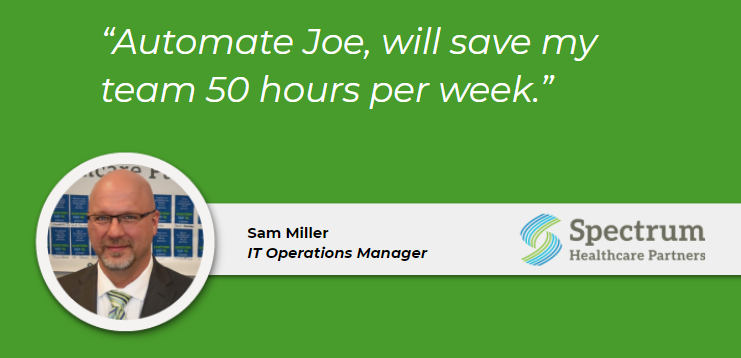How To Automate Your IT Service Management – All You Need To Know

Is your organization thinking about adding more automation to its IT service management (ITSM) capabilities? Or maybe your IT department is simply looking to find a way to better deliver against the increased business need for technology and the higher expectations of the employees it serves? Either way, this blog is here to help – from the benefits of adding automation to the key steps for getting your automation investments right.
Let’s start with the “why.”
4 key benefits of automation for ITSM
The “why” of most things in IT these days is pretty self-explanatory, with modern businesses requiring:
- More technology for the IT departments to then manage and support
- Faster change, including the introduction of new capabilities
- Better technology enablement in the form of higher-quality services and employee experience improvements
- Lower unit costs
Hence, it’s best to view automation through a benefits-based lens, with four key benefits of increased automation:
- Improved customer/employee experience and outcomes. In many ways, enhancing the customer or client experience is a key objective of IT Service automation – either directly through externally-facing technology in particular or in the support of other corporate capabilities where the linkage might not be so obvious. For instance, the IT department – and ITSM – might help to “power” a capability that better enables the employees who deliver the products and services that are eventually consumed by external customers. The automated provisioning of home-based working capabilities for employees is a great example of this. With the digital workflows and associated automation capabilities ensuring that employees are set up as home workers as quickly and as successfully as possible.
- Speedier and cheaper process execution and outcome delivery. For example, employee self-service request fulfillment, provides employees with 24/7 capabilities. Because as an organization increases in size, so will employee demands, operational complexity, and the repetition of tasks. Here, automating the service request fulfillment process means that employees will get their needs met more quickly, which means they’ll be happier and more productive, and the IT department, and consequently the business, benefits from reduced manual workloads and redundant tasks with the cost savings this brings, plus, simplified front and backend workflows.
- Increased operational flexibility. A workflow management solution such as SysAid Workflow Designer allows organizations to improve both IT, other business functions, and interdepartmental workflows using automation – enabling previously disparate teams to work better together in driving up end-user productivity (as well as their own). Because digital workflows can be quickly designed, delivered, and modified – by non-developers using a visual interface, drag-and-drop capabilities, and easy-to-use editing tools – it makes it easier to change the current ways of working and quickly.
- Freeing staff from high-volume, low-value tasks to do more important things. An example is the automation of incoming ticket triage and routing – where incident-handling automation makes it easier for IT service desk staff to stay focused and up to date on their most important IT support tasks. Leaving the triage and the handling of the simplest incidents and requests to automation and service orchestration capabilities also delivers quicker outcomes, saves costs, and potentially offers a better service experience to employees. For example, Sam Miller an IT Manager at Spectrum – an early adopter of the SysAid Automate Joe solution – found that their initial use of service orchestration would save his team at least 50 hours a week.

So, that’s the “why” of automation – but what about the “how”?
7 key steps for getting your ITSM automation right
As with many things in the ITSM world – or enterprise service management world – it’s worthwhile looking to the successes and mistakes of other organizations when either starting something new or changing the status quo. With this in mind, here are seven key steps in getting your ITSM automation right (and you can add having the required strategy and governance elements in place too):
- Understand the difference between “automation” and “orchestration.” A simple way to think of the difference is that automation is setting up a single task to run on its own. Whereas orchestration is the automated execution of many automated tasks – think digital process or workflow.
- Look at the return on investment (ROI) – don’t automate “just because you can.” Instead, automate tasks to reap a known set of benefits. Or, more specifically, automate when the benefits of automation outweigh the costs. This might relate to speed, operational costs, error reduction, freeing up valuable people to do other work, or something else.
- Understand what can be automated (or orchestrated). The simple answer is that any task that’s highly repetitive and has predictable variability can be automated. If it can be defined, mapped, and the outcomes are predictable, then it can be automated or orchestrated.
- Seek to orchestrate when possible. Some tasks, such as a password reset, are usually fairly self-contained. But if you automate tasks without in turn orchestrating the process in which that task executes, it’s just a local optimization. Experienced ITSM practitioners understand the pitfalls resulting from local optimization – and the same applies to automation.
- Ensure that a capability is ready for automation (before automating it). The red flags to look out for when deciding this include when tasks or processes are poorly defined or not comprehensive. Or when the defined processes don’t consistently deliver expected outcomes. Or when processes lack transparency or require manual intervention.
- Ensure that appropriate automation tools and capabilities are available. Trying to use the wrong technology, or trying to use technology that’s not fit for use for automation and orchestration, is a recipe for both frustration and failure.
- Obtain and grow the right skill sets. Successful automation is critically dependent on having the right people with the right skills – design skills, logical thinking and reasoning, organizational knowledge, and more. Please don’t try to automate without the right people.
Hopefully, the above will be helpful in your IT department and wider organization adding much-needed automation to its operations. If you would like to find out more about the opportunities of automation (and orchestration), then please request a demo.
You can also find out more by visiting the following SysAid webpages:
Did you find this interesting?Share it with others:
Did you find this interesting? Share it with others:









